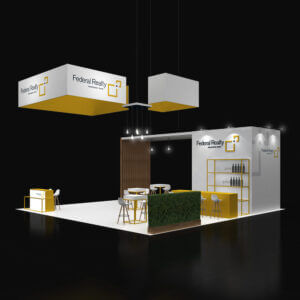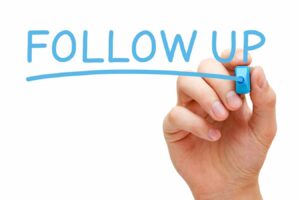
Pre-Trade Show Checklist: Do You Have What You Need to Succeed?
Top Automotive and Trucking Trade Shows in the United States of America
Nervous about your upcoming trade show?
That’s okay — whether this is your first trade show or you’re a seasoned trade show expert, planning and preparing for the big event can be an extremely stressful experience.
But don’t let the pressure get in your way.
Trade shows may be one of the more expensive marketing channels available, but they can also be one of the most fruitful marketing channels (as long as you can execute your event plan successfully).
In fact, while the majority of companies spend over 20 percent of their marketing budgets on organizing in-person events, three-fourths of companies say they expect a return-on-investment of more than 5:1 for live event and experiential programs.
With that much potential trade show ROI, you can’t walk into the event unprepared. Use this checklist to make sure you have everything you need to succeed.
Pre-Trade Show Checklist: Do You Have What You Need to Succeed?
 1. Budget and Goals
1. Budget and Goals
Have you heard the phrase, “you have to spend money to make money?”
When it comes to trade show budgets, that’s never been more true.
Trade shows are an investment, so you need to make sure you have your budget carefully allocated ahead of time for everything from the trade show tickets themselves and your exhibit design to your custom swag, handouts, and attendee travel accommodations.
Know your goals for the event, and be sure that every line in your budget maps directly to those goals. Before the event, articulate how you’ll measure your success. Your actual trade show ROI will likely be the key metric, but don’t forget to measure the intangible success indicators too; 84 percent of event marketers look at attendee satisfaction to measure event success.
2. Booth
Your booth is the bread and butter of the trade show event.
For many trade show attendees, your booth will be the first impression they have of your brand — so you need to make sure it’s a good impression.
Of course, the location of your booth is critical. But even if you get stuck in a corner of the event with low foot traffic, you can still draw people in with an engaging design, interactive displays and unique booth offers.
Your exhibit should reflect your brand and appeal to your target audience for the event. If you don’t have an in-house team member who has experience in trade show booth design, you should consult an expert.
A well-designed, conversion-driving display will be expensive and an exhibit consultant can help you make sure that it’s not a sunk cost.
 3. Staff Training
3. Staff Training
The true value of trade show events lies in the ability to meet face-to-face with your prospects, partners and customers. If the staff running your booth isn’t trained properly to manage those face-to-face interactions, you’ll lose good opportunities and put off potential customers.
Before the show, make sure each of your staff members is well-prepared, personable, and understands the goals of the show. They need to be familiar with the types of customers you’re looking for to avoid wasting long conversations on low-value, low-fit leads.
If you have multiple people working your booth, set a schedule for the different shifts and be sure that everyone knows the standard procedure for a shift change. Additionally, make sure your travel arrangements are settled beforehand; you don’t want to end up short-staffed because one of your team members couldn’t book a flight in time.
4. Engagement Plan
Nearly all (95 percent) of marketers agree that live events provide attendees with a valuable opportunity to form in-person connections in an increasingly digital world.
But making those connections is about more than just having friendly faces behind your booth — you need to give show attendees a reason to stop by your booth instead of your competitors’. You need a plan for engaging attendees during the show.
Some good trade show engagement ideas include:
- Free giveaways of branded swag such as hats, t-shirts and water bottles
- Games and contests that encourage attendees to interact with your booth
- Personalized assessments and free product demos
You should also think about how you might create photo opportunities at your booth. According to this benchmark survey, the second most popular type of content today is social media posts, and just under half of consumers create video with their mobile devices while at branded events.
 5. Follow-Up Plan
5. Follow-Up Plan
No matter how interested your event leads seemed at your booth, their interest will quickly fade if you never follow up with them post-show.
Before the event, write follow-up email templates so you can send them out ASAP. Have your booth staff collect lead information, including contact info like name, email and phone number and personal information to humanize your follow-up content and help leads remember your staff.
Considering the fact that 80 percent of trade show exhibitors never follow up with their show leads, just this simple act can be enough to make your brand stand out.
6. Emergency Plan
It’s a fact of life that sometimes, accidents happen.
Even the most prepared event planners occasionally run into snags and roadblocks, so you need to be able to make the most of these roadblocks so they have minimal impact on your overall trade show ROI.
So prepare for the worst: Bring a tool box, chargers, flash drives, medical supplies, and other emergency back-up materials just in case something doesn’t go according to plan — and if it doesn’t, don’t beat yourself up about it. As long as you’ve checked off the other elements on this list, the impact of these worst-case scenarios likely won’t break the bank.
The Takeaway
Event planning isn’t easy.
Your trade show ROI depends, in large part, on the planning and preparation you do before the show, often months ahead of time. Keep this checklist on hand as you ramp up for the event, and you’ll have everything you need to set your booth up for success.
